
| (one synonym is Dasychira queenslandica Strand, 1915) LYMANTRIINAE, EREBIDAE, NOCTUOIDEA | (donherbisonevans@yahoo.com) and Peter Mackey & Stella Crossley |
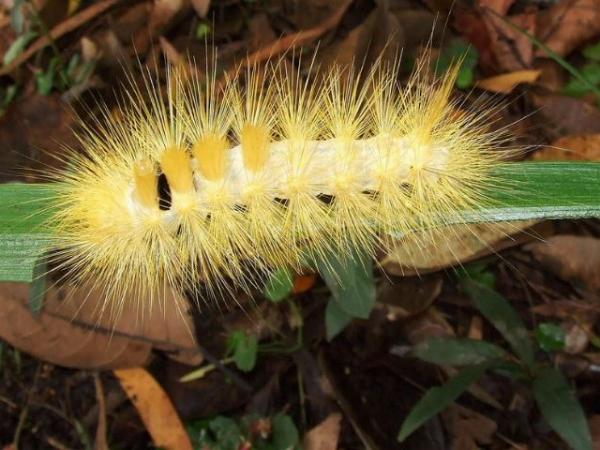
(Photo: courtesy of
Ann Peach,
found at Tolga, Queensland)

| (one synonym is Dasychira queenslandica Strand, 1915) LYMANTRIINAE, EREBIDAE, NOCTUOIDEA | (donherbisonevans@yahoo.com) and Peter Mackey & Stella Crossley |

(Photo: courtesy of
Ann Peach,
found at Tolga, Queensland)
The Caterpillar of Calliteara farenoides is yellow with a grey back and a prominent black band on the first abdominal segment. The caterpillar has an orange head and is covered in long pale yellow hairs. These include four tussocks on the back of each of the first four abdominal segments, and a longer spike of hairs on the tail. This caterpillar was feeding on
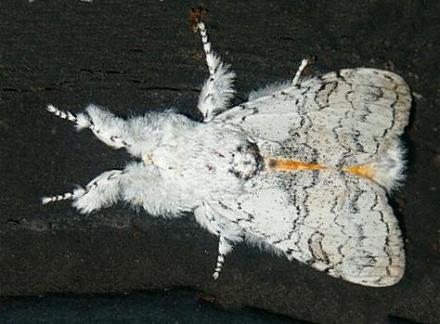
The female and male adults are different. The male has white forewings. each with various dark markings including a bent oval outline near the centre of the costa. The hindwings are white, each with an indistinct submarginal dark band, and a large orange area. The male has feathery antennae, and a wingspan of about 4 cms.
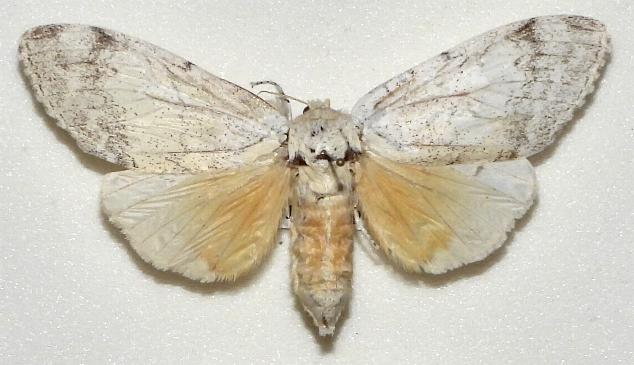
The female has white forewings, each with some submarginal squiggly lines. The hindwings are white, shading to orange on the hind-margins. The female has thread-like antennae, and has a wingspan of about 8 cms.
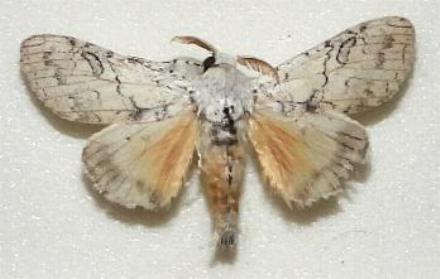
The species has been found in:
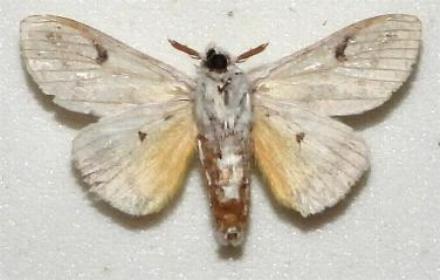
The holotype specimen described by Lucas is thought to have been mislabelled, and to have come from Queensland, not Victoria.
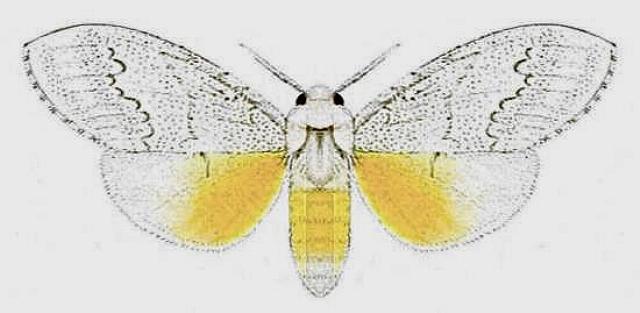
Further reading :
Ian F.B. Common,
Moths of Australia,
Melbourne University Press, 1990, pl. 19.4, p. 428.
Thomas P. Lucas,
On 34 new species of Australian Lepidoptera, with additional localities,
Proceedings of the Royal Society of Queensland,
Volume 8 (1892), p. 75.
Buck Richardson,
Tropical Queensland Wildlife from Dusk to Dawn Science and Art,
LeapFrogOz, Kuranda, 2015, p. 107.
Embrik Strand,
Indoaustralische, papuanische und polynesische Spinnen des Senckenbergischen Museums,
gesammelt von Dr E. Wolf, Dr J. Elbert u. a.
Wissenschaftliche Ergebnisse der Hanseatischen Südsee-Expedition 1909,
Abhandlungen der Senckenbergischen Naturforschenden Gesellschaft ,
Volume 36, Part 2 (1915), pp. 179-274.
Embrik Strand,
Bombyces and Sphinges of the Indo-Australian Region,
in Adalbert Seitz (ed.):
The Macrolepidoptera of the World,
Stuttgart : Alfred Kernen Verlag, Volume 10 (1933), p. 293, and also
Plate 38, fig c6.
 caterpillar |  butterflies |  Lepidoptera |  moths |  caterpillar |
(updated 3 May 2012, 31 October 2014, 17 August 2020)